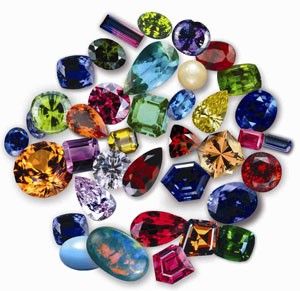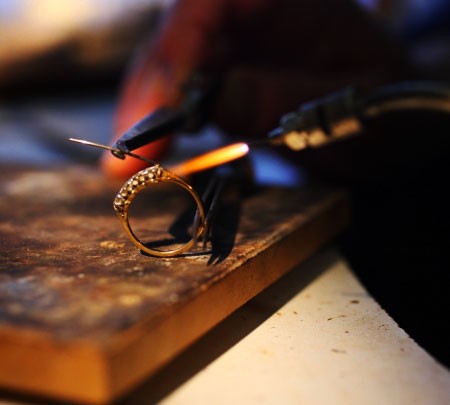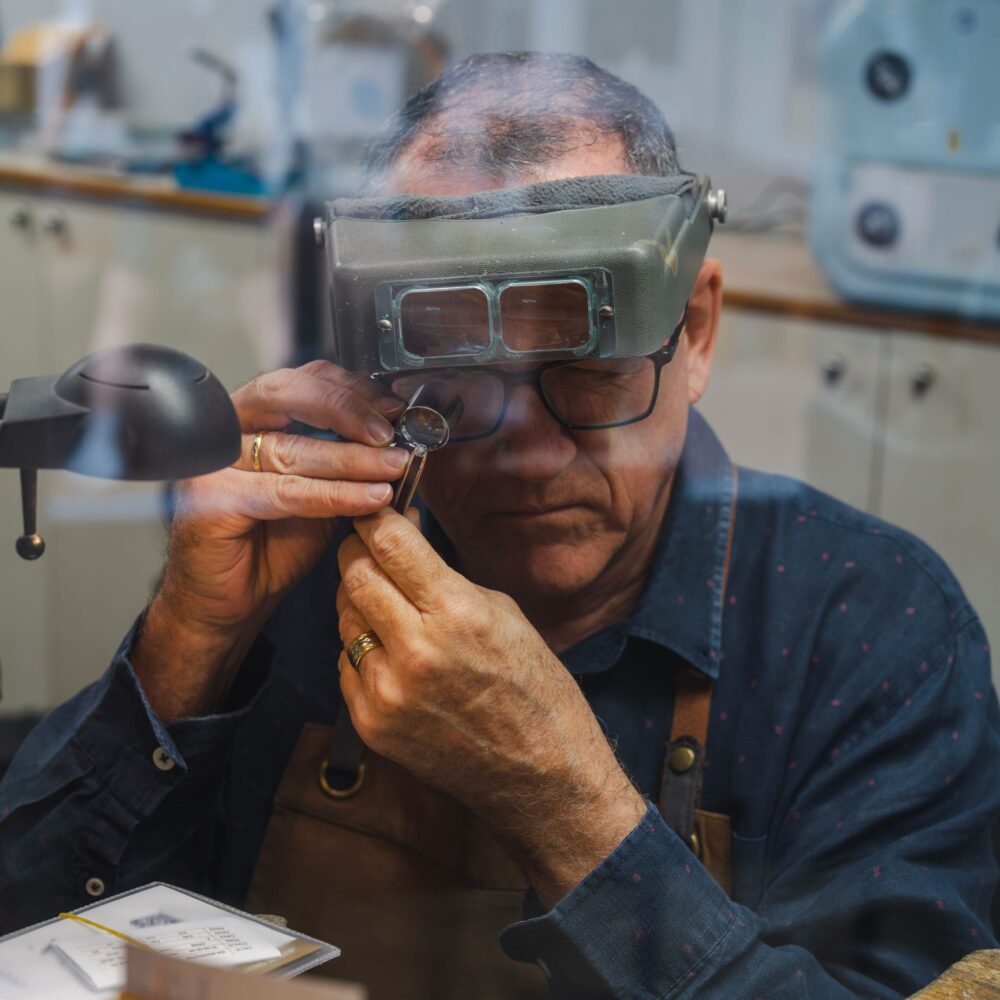Gemstone Overview
All precious and semi-precious stones have something special and beautiful about them. Value is given to gemstones according to availability, aesthetics, colour, transparency, lustre, and hardness. Semi-precious stones often refer to softer stones of less value, as opposed to precious stones which are harder and have more value. This terminology however, is not entirely correct as many “semi-precious” stones are more valuable per carat than “precious” stones. It would be better to refer to them all as “gemstones”.
Availability of gemstones is not always as straight forward as what is being mined at the time. In some cases the “availability” of gemstones is controlled or ”managed”. For example, the value of a red garnet (pyrope garnet) is less than an orange garnet (spessartite). This is because the orange garnet is far less common, plus it has the added value of an intense orange colour that is highly sought after.
The Gems among gemstones:
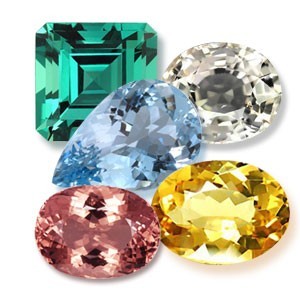
The Beryl group
In
the Beryl group there are emeralds, aquamarine, yellow, yellow/green,
pink, and colourless Beryl. They all have the same chemical composition
with different trace elements causing the different colours. Beryls can
be faceted or cut en cabochon.
The Emerald is the most rare of the Beryl group, and therefore more expensive. One very seldom finds large, clear emeralds. There are some famous large emeralds, but these would be part of the crown jewels or national collections you find in the London Museums. They are a very specific green colour, and the term “emerald green” is not only used for gemstones. The name comes from the Greek word – Smaragdos, meaning green stone. Emeralds are very rarely free of inclusions, bubbles, healing cracks or foreign crystals. These inclusions are known as the “jardin” or” gardens”. The inclusions cause internal stresses, and combined with the brittleness of emeralds, means emeralds have to be worn with extreme care. They are sensitive to pressure and temperature change (so washing dishes is out of the question!)

The Corundum group
Rubies
and sapphires are part of the corundum group. On the Mohs scale of
hardness they are 9. The jump in hardness between corundum and diamond
(Mohs 10) is much more than it seems from the scale. A diamond is 140
times as hard as corundum, but corundum is very hard wearing… seven times as hard as topaz. Corundum can be cut either en cabochon or faceted.
The red corundum is called ruby, from the Greek name for red – rubeus. There is no demarcation between ruby and sapphire – they are the same chemical composition but the colour pigment influencing ruby is chrome. The most sought-after colour is “pigeon blood” red – pure red with a slight blue hue.
Any stone referred to as a sapphire is blue, all the other colours are qualified by description i.e. yellow sapphire, green sapphire, pink sapphire, violet sapphire, and red sapphires. The colouring pigment in blue sapphire is iron and titanium; in violet stones, vanadium. A small iron content results in yellow and green tones, whereas chrome produces pink. The most highly sought after colour is “cornflower blue” which used to be called “Ceylon Sapphire”.
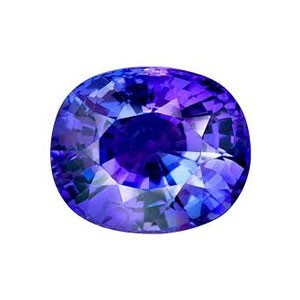
Tanzanite
Tanzanite
is the blue version of Zoisite, which is also found in green and red.
Tanzanite was first discovered in 1967 in Tanzania, hence the name. It
was first used by New York jewellers Tiffany & Co, but since then a
marketing genius has put it on the world map. The marketing has been so
good that most people have heard of it, and would like to own one. It
has an incredible intense colour, but is very soft. Other semi -precious
stones which have incredible colour but are soft, do not hold a good
value, but tanzanite, despite its softness is almost as expensive as a
good sapphire, which is hard and can be an incredible cornflour blue.
This can be due only to the marketing drive. Most tanzanite comes out of
the earth brown, and are heat treated to be blue, at temperatures of
400-500C. If the blue is not intense enough, it is “colour enhanced”.
There is no problem in heat enhancing stones, as long as the client who
is purchasing the stone knows what they are buying. They need to know if
a stone is naturally coloured or not. I would discourage anyone to wear
a Tanzanite in a ring, unless it is purely a dress ring. Wear it
preferably as a pendant or earrings. If you asked any setter in the
trade what they thought of tanzanite, they would probably like to kill
the genius that put it on the map!
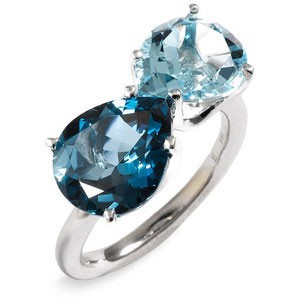
Topaz
Precious
topaz comes in yellow, red-brown, pinky red, pale green, colourless and
light blue. The light blue stone is called “Sky Blue”, a more intense
blue (which is heat-treated) is called “Swiss Blue”, and then finally
the most intense teal blue stone (also heat-treated) is commonly known
as “London Blue”. Most people would not be able to tell the difference
between aqua and Sky Blue topaz, as they are very similar in colour, and
possibly a little harder, yet is still sensitive to pressure with
strong cleavage – so is a very good substitute for aquamarine. Blue is a
always good seller – traditionally in the jewellery trade, blue sells
the best – it is well-priced and very attractive. Keep that in mind for
resale! This gemstone is found naturally in the the softer colours, such
as pale green (not too different from peridot) and a very pretty salmon
pink (the most valuable). Many people refer to citrine as golden topaz,
or smoky quartz as smoky topaz, which is not correct, as these are also
both part of the quartz family. Stones with very intense colour have
been heat-treated – the very common yellow stones turn pink or blue when
heated. Most topaz is mined in Brazil, and the Far East, with smaller
deposits in many other parts of the world.
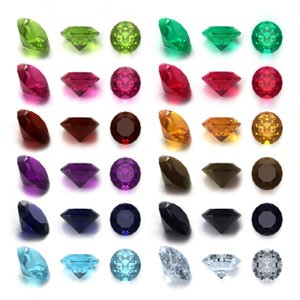
Tourmaline
Tourmaline
is unique because of its amazing variety of colours. The crystal grows
gradually changing colour. Another incredible fact about tourmaline is
that depending on where it is from, the colour range changes within the
crystal, Brazil produces crystals that grow from red to green on the
outside rather like a watermelon, and Southern Africa produces crystals
that grow from green to red on the outside. It is very unusual to find
an entire crystal of tourmaline in one colour. This is why it is very
unusual and difficult to find a perfectly matching pair of tourmalines
of any significant size If there is a large piece of crystal, it would
more often than not be cut into one large stone because it can be sold
for much more per carat, as opposed to cutting it into a pair. Another
reason that it is so difficult to match, even if you have one and are
trying to match it.

